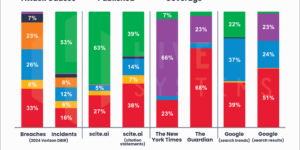Industrialized nations’ greenhouse gas emissions dipped 0.7 percent in 2011, helped by a U.S. shift from high-polluting coal in power plants and by Europe’s economic slowdown, data compiled by Reuters showed on Friday.
For many years it has been a mantra that rich nations, historically the top polluters, should make the biggest cuts in emissions while emerging economies could burn more energy to help lift them from poverty.
But figures based on submissions by 42 industrialized nations this month used to judge compliance with U.N treaties underscore how continued worldwide growth in emissions is increasingly led by China and other emerging economies.
Combined emissions in the 42 countries slipped to 17.1 billion tonnes in 2011 from 17.2 billion in 2010. That was down 6.4 percent from levels in 1990, the U.N. benchmark year for judging progress in combating global warming.
“For the United States, it’s mainly a shift from coal to gas in power plants,” said Steffen Kallbekken, research director at the Center for International Climate and Environmental Research, Oslo, said of the 2011 numbers.
“For Europe it’s primarily weak economic activity,” he said. Industrialized nations are trying to cut emissions, mainly from burning fossil fuels, to curb a rise in temperatures and avert heat waves, floods, droughts and rising sea levels.
Senior government officials from around the world will meet in Bonn, Germany, next week for a new round of negotiations on an emissions deal that is meant to be agreed in 2015 and enter into force in 2020.
The last attempt at an accord failed in Copenhagen in 2009.
In the United States, the world’s No.2 emitter behind China and ahead of the European Union, greenhouse gas emissions dipped to 6.67 billion tonnes in 2011 from 6.79 billion in 2010.
That put U.S. emissions 7 percent below their 2005 levels. President Barack Obama wants a cut of 17 percent from 2005 levels by 2020 but has lacked support for that drive in the Senate.
European Union emissions fell by 3.3 percent in 2011, according to official accounting of gases ranging from carbon dioxide to methane.
That means EU emissions were 18.5 percent below 1990 levels in 2011, apparently on target for a promised cut of at least 20 percent by 2020 despite a plunge in the price of carbon dioxide on an EU market that has removed a main spur to action.
Elsewhere, emissions rose in 2011 in nations including Russia, Japan and Turkey. They were little changed in Canada and Australia.
China Rises
The unexpectedly rapid rise of emissions in China and other emerging economies such as India and Brazil in recent years is pushing up global emissions and complicating talks among 200 nations on a new U.N. accord aiming to slow climate change.
Emerging economies are not obliged to submit annual emissions data to the U.N Climate Change Secretariat.
But other studies show that worldwide emissions are rising. A Global Carbon Project, for instance, estimates that world emissions from fossil fuels and cement grew by 3 percent in 2011 and by 2.6 percent in 2012.
It says China’s surging emissions were responsible for most of the global growth.
“Per capita emissions of China are now pretty much on the same level as those in the EU,” said Jos Olivier, senior scientist at the PBL Netherlands Environmental Assessment Agency. (Reporting By Reuters Environmental Correspondent Alister Doyle; Editing by Hugh Lawson)




















 Moderating Premium Rates, Falling Yields: European Insurers Resilient
Moderating Premium Rates, Falling Yields: European Insurers Resilient  Four P/C Insurers Are ‘AI Titans’; AI Impact Leaders Revealed: Research
Four P/C Insurers Are ‘AI Titans’; AI Impact Leaders Revealed: Research  National Flood Insurance Program Authorized to Continue Through Mid-March
National Flood Insurance Program Authorized to Continue Through Mid-March  RiverStone International to Provide Loss Portfolio Transfer for Zurich Insurance
RiverStone International to Provide Loss Portfolio Transfer for Zurich Insurance 
